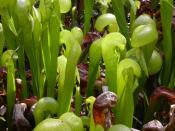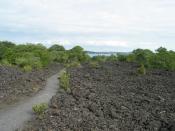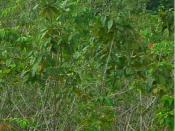Ecosystem succession is the process by which life is yielded to an otherwise lifeless region or area. The time involved in ecological succession is on the scale of tens, hundreds, or thousands of years, not the millions of years involved in the evolutionary time scale. Like many other natural processes, ecosystem succession is a difficult phenomenon to grasp. One reason is that it happens so gradually. It may take as long as 1,000 years for succession to transform an ecosystem from the first or pioneering stage to the final or climax steady state. Over this time, plant and animal communities compete for resources in a tug-of-war. One species replaces another slowly through overlapping and transitional stages. Without disturbance, an ecological system will move toward steady-state conditions in which all species exist in balance, competing for the same resources--light, nutrients, and water.
There are 2 types of succession; primary and secondary.
Primary succession is the colonization of an area which has not supported an ecosystem before. Secondary succession is ecological succession in a previously inhabited environment that was exposed to some type of disturbance; soil is already present.
Ecosystem Succession
Everything lives and dies for a reason, even if that reason is to feed the next organism that comes along. Small plants and bacteria flock to areas where little or no nutrients exist. They do this for mainly two reasons; first, they have a need of little or no nutrients to survive, and secondly, there are few, if any, predators in these areas in which to feed off the small plants and bacteria.
As these organisms die out, their remains mineralize the soil of the area that was previously malnourished. The nutrition can then be used by slightly larger, more nutrient dependant plant life. This progression repeats itself until the area...


